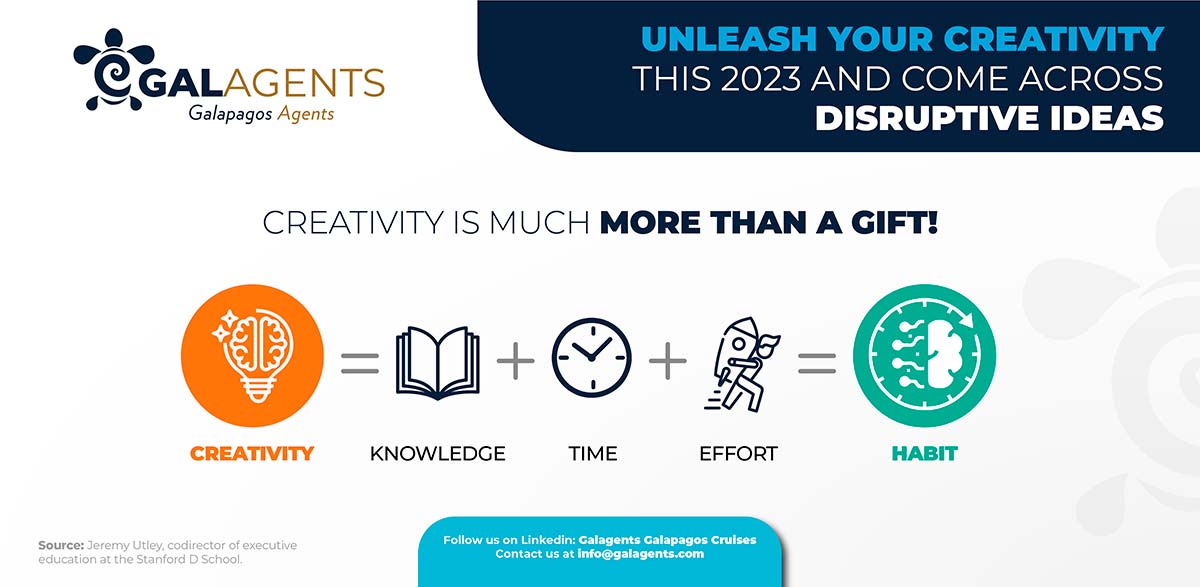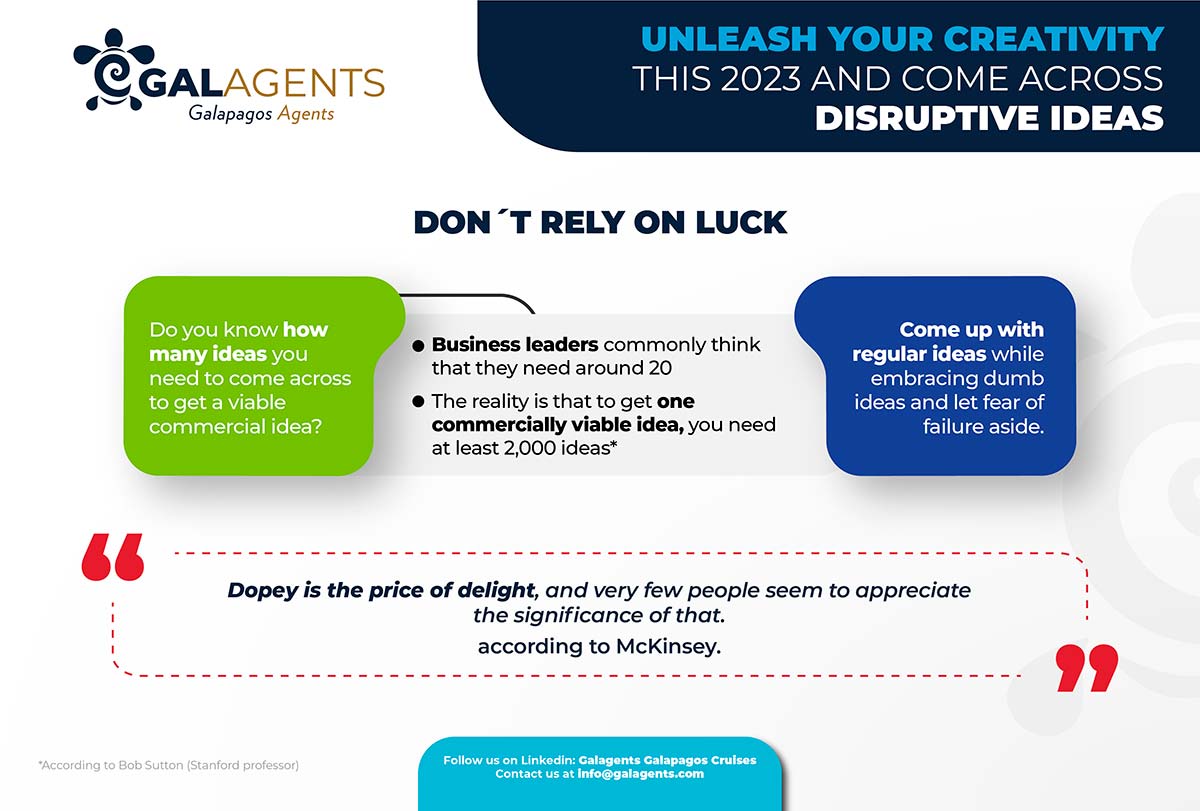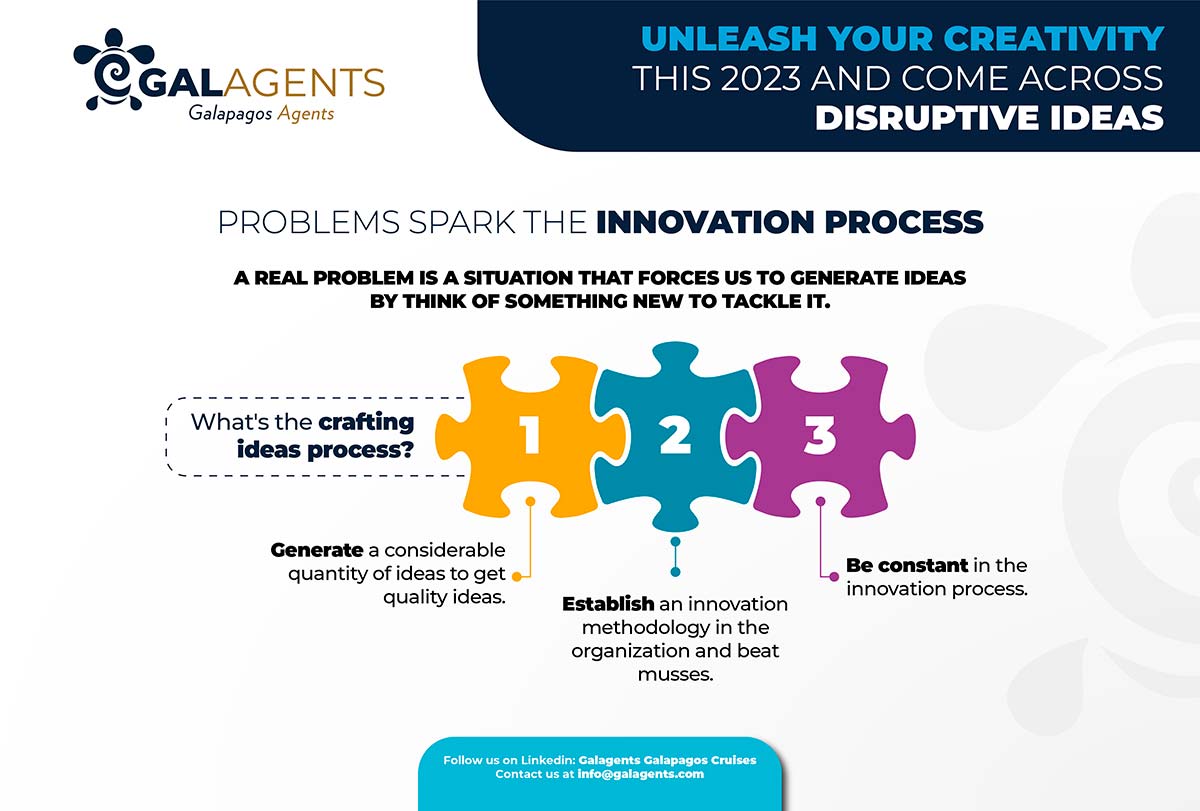A new year arose, and there’s no better time to come up with new and disruptive ideas to stand out in this red ocean we’re navigating as tourism businesses.
What happens if you think you need to be more creative or ingenious? Don’t worry; keep reading and get tips to hack your mind and thrive in innovation. Hopefully, this article will unveil the truth and the best way to unleash our creative mindset.
Creativity is much more than a gift!
Besides what the global media showcase, groundbreaking ideas are not a gift of God! Hence, we first need to internalize that creativity is a skill that requires knowledge, time, and effort until it becomes a habit, according to Jeremy Utley, codirector of executive education at the Stanford D School.
Creativity = knowledge + time + effort = habit

Thus, anyone can be creative, and any business, regardless of size or industry, can become a world-class innovation company.
The pandemic period pushed us to innovate to survive, especially in the tourism and hospitality industry. For example, many companies organize virtual tours that connect with people’s need to travel, the contactless technology that many hotels implemented to guarantee travelers’ safety, or self-guided tours with 24/7 customer service to ensure high levels of quality and a flawless trip.
Innovation is not a single event.
According to Utley, many organizations consider innovation as an event that occasionally happens after attending or organizing a hackathon or a workshop that gives clues about the innovation process.

However, innovation requires discipline, tons of time and effort, and embracing many failures to master the movement.
It would be best if you swam more than once before calling yourself a swimmer.
The same happens with the invention process. We need to establish a discipline to develop our creative mindset and skill.
How can we do it?
Experts recommend setting at least 30 minutes in our daily calendar to generate ideas; don´t worry if most of them are dumped.
Don´t rely on luck
Dr. Dean Keith Simonton, the Lifetime Achievement Award winner from Mensa, says that you need many ideas to get a good idea, which means “A LOT.” Thus, in this case, more is better!
Stanford Professor, Bob Sutton, said that to get one commercially viable idea, you need at least 2,000 ideas. Yet, business leaders commonly answered that they need around 20, a massive gap between expectation and reality.

We recommend establishing an organizational environment that helps everyone within the company generate ideas systematically. Sometimes, those unrelated to a specific issue or area can come up with exciting ideas.
In its recent article called “The simple way to get more ideas,” McKinsey references Jony Ive, a colleague of Steve Jobs at Apple, who said that Apple´s owner used to share ideas with him every day at lunch. As Jony said, he remembers Jobs for getting awful ideas because most of Steve´s ideas were dumped, even terrible, but very few were brilliant.
What we can get from Jony´s comment is that we need to not only come up with ideas regularly but also let the fear of failure or dumbness aside.
“Dopey is the price of delight, and very few people seem to appreciate the significance of that,” according to McKinsey.
Problems spark the innovation process

In his book Ideaflow, Utley mentioned that we start thinking about problems, but we already know the tasks we need to fulfill and how much time we need to invest in tackling them. However, that´s not a problem!
A real problem is a situation that forces us to think of something new. Thus, the only way to tackle that problem is by generating ideas.
What do we need to do to overcome the fundamental problems in our business? According to Utley, crafting idea means:
- Generating a considerable quantity of ideas which leads us to quality.
- Establish an innovation methodology among us and then beat musses.
- Being constant in the innovation process
Being disruptive is the best problem-solving tool!
As we mentioned above, the problem forces us to move away from our comfort zone, and the only way to solve it is by generating new and disruptive ideas.

Access to all the infographics here
To do so, we must embrace risk and failure by understanding that the ideas may affect our business profitability for a period. Disruption establishes new standards that need to be broken with another disruptive idea.
Think for a minute about the tourism industry; we have solved many problems throughout the years, mainly due to the COVID-19 global shutdown:
- Open your hotel room door through an app to avoid contact.
- VR tours that showcase the travel experience to potential travelers and inspire them to travel again
- Implementing robotic attention in certain areas that not only offer a tech experience and reinforce contactless service while traveling
- Apps or communication channels that facilitate virtual and reliable contact with tour and travel companies 24/7, like Galagents 24/7 live chat with a customer service agent.
All of them have been disruptive, but a new problem arose that needed to be tackled after a while.
Up to this point, we hope your brain is awakened and ready to think about any idea without looking for perfection. Remember that innovation is a constant update of what we were used to being or doing.
You and your tourism business can be innovative. However, it would be best if you generated as many ideas as possible by involving your team actively in producing ideas. Innovation is a team process!
Don’t forget that you have first-hand experience with the best innovative toolset that can push you to new ideas.
The real world gives us different environments and contexts and the best ways to solve problems.
Last but not least, remember to embrace risk because ideas are risky but highly rewarding.

